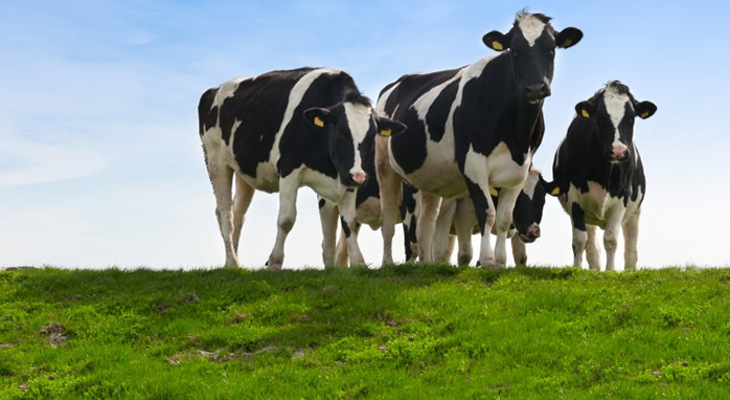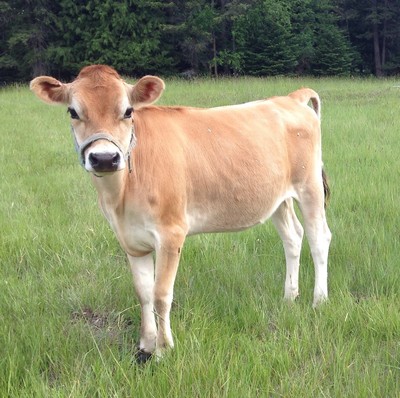These high-production cows produce milk on average for less than three years after which they are culled and their meat used for beef. Will they be kept as pets or slaughtered.
 Do Cows Need To Be Milked Here Are The Facts Peta2
Do Cows Need To Be Milked Here Are The Facts Peta2
However a cow will most likely go dry 1-2 months after pregnancy.

How long to dairy cows produce milk. The time on milk varies from farm to farm. No milk is produced at this stage obviously. Naturally they would produce 1 gallon of milk a day.
In most commercial dairy farms the calves are usually taken away from their mother a day or 2 after birth. Milk production is on the rise in Asia. The life of a dairy cow varies from farm to farm and from cow to cow.
The average lifespan of a cow is about 20 years. Dairy cows lactate produce milk for about 10 months after calving. The life cycle of a dairy cow.
The calf is given colostrum raised on milk to 90 days on our farm. But that stage cant last forever. They are usually artificially inseminated within three months of giving birth.
In reality a dairy cow produces milk for months after birth. Since cows only produce milk after theyve been pregnant farmers artificially inseminate them onwhat the industry calls a rape rack Jo-Anne McArthur We Animals Around 10months aftera cow becomespregnant she gives birth and a strongbond instantlyforms betweenmotherand calf. But we inject them with some crazy stuff and they produce 6 gallons a day and get very ill from doing just that.
Due to extensive biological manipulation todays dairy cows produce up to 12 times more milk than they would naturally produce to feed a calf. Historically there was little distinction between dairy cattle and beef cattle with the same stock often being used for both meat and milk production. Most US dairy cows are Holsteins the black and white cows seen in the photo below though Jersey cows the brown cows in the photo above and other crossbreeds are also used.
Dairy cattle also called dairy cows are female cattle bred for the ability to produce large quantities of milk from which dairy products are made. At 12-15 months the heifer is placed with. Some can live for as long as 20 years while others may have a much shorter life.
97 of newborn dairy calves are forcibly removed from their mothers within the first 24 hours. Others become so weak they are unable to stand. However removing cows from the dairy herd is a common practice that allows farmers to bring in new more productive cows thus ensuring a steady supply of milk.
Dairy cows can often only produce very high milk yields for an average of 3 years after which they are slaughtered and the meat is normally used for beef. There are approximately 250 million cows producing milk around the world. See here how the dairy industry moves lame cows.
After four or five years of producing abnormally large quantities of milk thanks to genetic manipulation and drugs cows become spent. Dairy farmers work hard to keep cows healthy for a long productive life. Dairy cows are required to give birth to one calf annually in order to produce milk for 10 months of the year.
Although it depends on living. British dairy farmers produce around 14 billion litres of milk each year - thats enough to fill around 5600 Olympic size swimming pools. Each cow produced an average of 23391 pounds of milk.
Its still an ethical issue and a valid reason to go vegan but its good to have a clear picture of what actually happens on a dairy farm instead of spreading misinformation purposefully or not. Typically Cows are pregnant for around 285 days of a year. Many suffer a painful infection called mastitis.
Their bodies just give out and they stop producing as much milk. Dairy cows generally are of the species Bos taurus. But in case of keeping a milking cow on small farms you dont have to do this.
So what happens to old dairy cows if they are no longer beneficial. But usually the lifespan of dairy cows is shorter about 15 years. How long does a dairy.
This means the cow will not be able to produce milk 1-2 months after the birth of calves. Cows produce milk when they are not pregnant in order to feed their calves. There are approximately 10 million dairy cows in North America 23 million in the EU and 6 million in Australia and New Zealand.
The average UK dairy cow produces almost 8000 litres of milk each year and has just under 4 lactations milk producing cycles in her lifetime of typically six and a half years. This is common in all mammals as they produce the most amount of milk right after pregnancy. The most brilliant stage of a dairy cow is when it produces delicious and quality milk.
In Britain around half of this liquid milk is sold for drinking and the other half goes into tasty dairy products such as cheese butter yoghurt ice cream and dried milk powder which is a vital component of many other food products. In 2019 there were 9336 milk cows in the United States. You can start little by little decreasing the calfs reliance on its mothers milk.
Even so virtually all dairy calves are stolen from their mothers within hours of birth in order to maximize profit.
Mini and Midsize cows generally hold condition better without the additional caloric intake needed for a Full Size dairy cow. Jerseys naturally produce the highest quality milk for human consumption.
 The Jersey Cow Milk Production For The Small Homestead Countryside
The Jersey Cow Milk Production For The Small Homestead Countryside
They are a high-producing dairy animal yielding up to six gallons of butterfat milk daily and their meat is at the top level for its predisposition to marbling which gives meat its flavor and tenderness.

How much milk do miniature jersey cows produce. The general saying in the mini jersey circle is. In the book Devil in the Milk Professor Keith Woodford explains the differences between normal milk and A2 milk. The Jersey was developed on the Island of Jersey in the English.
General Facts About Channel Islands Milk Friesian cows produce mostly A1 milk Jerseys and Guernseys produce mainly A2 milk. Mini Jersey cows form strong bonds with the people who milk and feed them. They produce the same quantity or a little less in milk and they have a much higher cream content of about 40 or more.
This is the 9th day since the calf was born. By Ken Scharabok For those who only need one or two milk cows for the family and arent interested in large-scale dairy cow farming one dairy cow breed in particular seems to stand out the Jersey cow. This level of production provides enough milk for.
Crazy thing is that she only seems to produce about a half gallon a day. Below are some cattle that we currently have for sale please contact us with any questions. Its actually better for Miniature Jerseys to be grass-fed because an overweight cow.
A better alternative is to opt for a mini cow that will produce up to one and a half gallons of milk daily. Miniature Jerseys like standard jerseys are first and foremost milk cows. You can milk some up to 3 times a day every day for the entire 305 days of lactation a year.
That small Jersey of old is now called the Miniature Jersey. Jersey cow is widely known as the excellent breed of cow can produce around 40 liters of milk per day. They keep their weight up at the same time as feeding a calf and keeping you supplied in milk.
Two miniatures to one standard forage. Each cow living on the farm produces about 10 gallons of milk per day. My cows give 1 to 1 12 gallons per milking.
Youll find that this is more than enough to make a substantial amount of milk. Miniature Holstein cows measure at about 42 inches in height. We let the calf stay with her the first three days and then began to separate them allowing the calf to stay with her for about 2 hours after each milking twice a day.
Thats the great thing about small-breed Jerseys. Only one cow can produce about six to seven gallons of milk per day. Contact Ida at.
The milk of cows named Jersey Holstein Friesian Ayrshire and. But a typical family farm doesnt need 6 plus gallons of milk a day. Standard Jersey milk is essentially the same as mini Jersey milk.
The cow that will produce the amount of milk we need and consume as little of our resources as possible while doing so. Standard Jerseys produce 4 to 8 gallonsday avg. This is considerably less than a standard jersey and usually much more manageable for a.
They are the result of selective breeding of descendants of the original Jerseys imported from the Isle of Jersey with other polled. Most common specially fed cows are seen milking two to three times a day. Apart from this if we consumed jersey cow milk than it is beneficial for the health in many different ways as it is more nutritious then other.
Jersey cows are the second largest breed of cows weighing between 800 and 1200 pounds. The Miniature Jersey is not a bred-down version of the standard Jersey of today. Small Jerseys produce 2 to 5 gallonsday average.
Sold are located towards the bottom of the page. This is a much more manageable amount. Jerseys are uniquely right for these times.
The average production for a miniature Holstein Cow can produce as much as 2 to 3 gallons of milk a day. The farmer usually impregnates the cow every year to force her to produce as much milk as possible. Milk production from the Jersey ranks high in quality rather than quantity.
They will give on average between 15 and 3 gallons of milk daily.
ads
